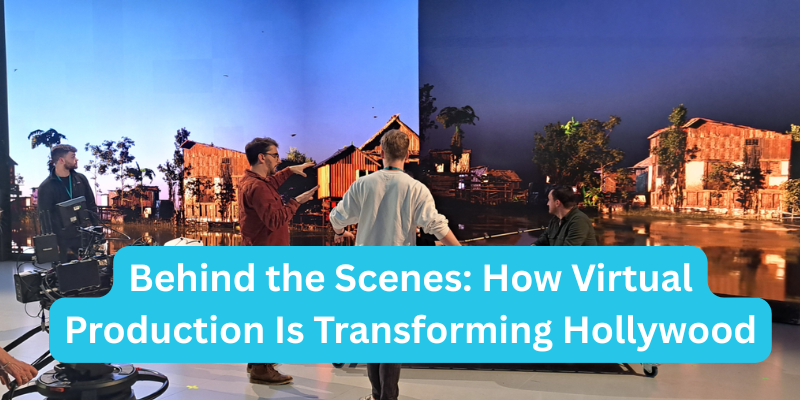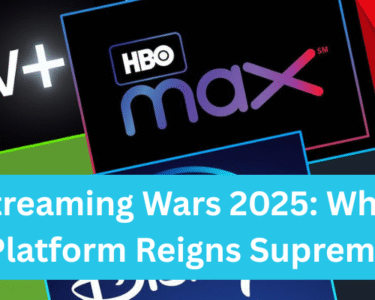In 2025, Hollywood is experiencing a transformative shift powered by virtual production, a filmmaking technique that merges physical sets with real-time digital environments. Gaining prominence through projects like The Mandalorian, this technology—driven by LED walls, game engines, and artificial intelligence—is redefining cinematic storytelling. Offering cost efficiencies and creative possibilities, virtual production is reshaping the industry. This article delves into its mechanics, advantages, challenges, and future, providing a behind-the-scenes glimpse into Hollywood’s innovative evolution.
1. What Is Virtual Production?
Virtual production combines computer-generated imagery (CGI), motion capture, and real-time rendering with live-action filming. Unlike traditional methods that depend on green screens and lengthy post-production, it employs LED walls to display photorealistic backgrounds that sync with camera movements. Tools like Unreal Engine from Epic Games and Industrial Light & Magic’s StageCraft allow filmmakers to visualize scenes on set, blending physical and digital elements seamlessly. Seen in films like The Batman and Poor Things, this approach enhances efficiency and immersion, revolutionizing Hollywood’s production process.
2. How Virtual Production Works
2.1 Pre-Production: Virtual Scouting and Pitchvis
Virtual production starts with pre-visualization (previs) and pitchvis, where 3D artists craft digital scenes to pitch ideas or plan shots. Films like Godzilla and Men in Black 3 used pitchvis to secure funding by demonstrating visual concepts. Directors and cinematographers use virtual reality headsets to explore digital sets, experimenting with camera angles and lighting without physical locations, reducing time and expenses.
2.2 Production: LED Walls and In-Camera VFX
During filming, LED volume stages—large, curved screens—project real-time digital environments, from futuristic cities to distant planets. Technologies like Sony’s Crystal LED or ILM’s StageCraft provide natural lighting and reflections, minimizing post-production work. Camera tracking systems, such as Vicon or Mo-Sys, align virtual backgrounds with camera movements, ensuring realistic parallax effects. Actors perform within immersive settings, enhancing their engagement compared to green screen setups.
2.3 Real-Time Adjustments
Virtual production enables on-set tweaks to lighting, backgrounds, or effects. A forest scene’s ambiance, for instance, can be altered instantly via Unreal Engine, avoiding reshoots. Visual effects teams collaborate live, using tools like DaVinci Resolve for real-time color grading to capture final pixels in-camera. This flexibility accelerates decision-making and encourages creative experimentation.
3. Benefits of Virtual Production
3.1 Creative Freedom
Filmmakers gain unprecedented creative control, unbound by physical limitations. Virtual production crafts immersive worlds, like The Mandalorian’s Tatooine or Dune: Part 2’s deserts, driven by imagination. Directors can adjust camera angles, lighting, or atmospheric effects in real time, enabling innovative narrative approaches.
3.2 Cost and Time Efficiency
By reducing location shoots and post-production, virtual production lowers costs and accelerates timelines. LED walls eliminate travel or complex physical sets, while real-time rendering reduces reshoots. A virtual sunset scene can extend for hours, unlike real-world constraints. This efficiency suits blockbusters and smaller projects like commercials or music videos.
3.3 Immersive Performances
LED walls envelop actors in realistic environments, inspiring authentic performances. Unlike green screens, where actors visualize settings, virtual production provides tangible visuals. In The Irishman, ILM used virtual production for de-aging effects, enhancing realism without heavy makeup. This immersion elevates acting quality and reduces performance uncertainty.
3.4 Sustainability
Virtual production minimizes filmmaking’s environmental footprint by reducing travel and physical set construction. Digital sets can be repurposed across projects, and virtual scouting cuts location visits. This supports Hollywood’s push for sustainability, appealing to eco-conscious studios and audiences.
4. Challenges and Considerations
Virtual production faces obstacles, including high setup costs for LED stages, such as those at Sony Innovation Studios, which can challenge low-budget projects, though rental options are growing. Technical issues with LED walls or rendering engines demand skilled crews, and the shortage of real-time 3D artists creates bottlenecks. Legal considerations, like digital likeness rights and privacy, require careful management to meet regulations. Human creativity must guide technology to preserve storytelling’s essence.
5. The Role of AI in Virtual Production
Artificial intelligence enhances virtual production by generating detailed landscapes, automating tasks like rotoscoping, and analyzing audience preferences. AI tools create 3D models for pre-production and adjust digital environments on set. In The Mandalorian, AI optimized real-time rendering, boosting efficiency. Filmmakers must balance AI’s capabilities with human vision to ensure technology enhances, rather than overshadows, creative storytelling.
6. The Future of Virtual Production
The virtual production market is expected to grow at 17.8% annually through 2030, with over 300 LED stages globally. Accessibility is increasing, with rental studios like Vū Technologies empowering independent filmmakers. Emerging technologies, such as augmented reality and blockchain for secure content distribution, could further streamline workflows. As younger filmmakers, familiar with virtual environments, adopt these tools, Hollywood will embrace bolder, more immersive narratives.
7. Conclusion: A New Era for Hollywood
Virtual production is revolutionizing Hollywood in 2025, delivering unmatched creative freedom, efficiency, and immersion. From LED walls to AI-driven tools, it enables filmmakers to craft visionary stories while cutting costs and environmental impact. Despite challenges like high costs and skill shortages, growing accessibility signals a future where all creators can leverage this technology. As virtual production advances, Hollywood’s storytelling is entering a dynamic, limitless new chapter.
8. Five Most Commonly Asked Questions About Virtual Production
Q1. How does virtual production differ from traditional VFX?
Virtual production integrates live-action and CGI in real time using LED walls and game engines, capturing final visuals on set. Traditional VFX relies on post-production, using green screens and extensive editing, which is slower and less immersive.
Q2. Is virtual production only for big-budget films?
Initially used by blockbusters like The Mandalorian, virtual production is now accessible to smaller projects through rental studios and cost-effective tools like Unreal Engine, supporting commercials, music videos, and indie films.
Q3. How does virtual production affect actors?
Actors benefit from LED wall environments, which provide realistic visuals for authentic performances, unlike green screens. Real-time feedback allows them to refine scenes on set, improving performance quality.
Q4. What role does AI play in virtual production?
AI generates digital assets, automates tasks like character animation, and optimizes real-time rendering. It enhances efficiency but requires human oversight to maintain creative integrity.
Q5. Will virtual production replace traditional filmmaking?
Virtual production is a tool, not a replacement. It excels for projects requiring digital environments but may not suit all narratives. Filmmakers blend methods based on creative and budgetary needs.




